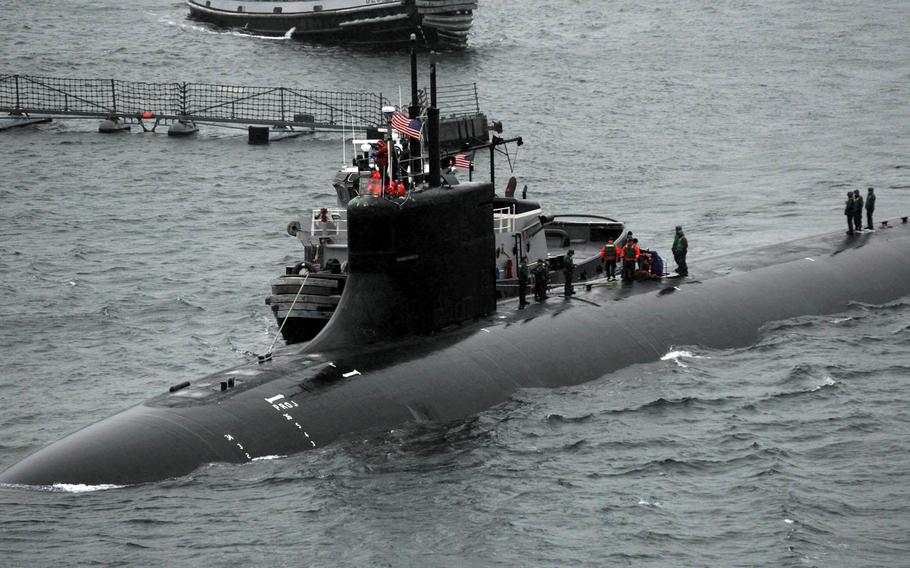Submarines proliferating in the South China Sea are increasing risks in already treacherous waters, security experts said Friday, a day after the Navy announced an undersea collision in the Indo-Pacific.

The USS Connecticut, a Sea Wolf-class fast-attack submarine, was damaged Oct. 2, when it collided with something while submerged in international waters in the region, the Navy said Thursday.
The statement, which did not describe the object that was struck, said several sailors suffered non-life-threatening injuries. Damage to the Connecticut is still being assessed, but the vessel has been moving on the surface toward Guam since the incident.
A spokesman for the Hawaii-based Pacific Fleet, contacted by Stars and Stripes on Thursday, would not say where the collision occurred. However, an unnamed defense official told U.S. Naval Institute News it was the South China Sea.
Many Chinese submarines are operating in the region, although they are less capable than the nuclear-powered U.S. vessels, according to Ian Chong, an associate professor of political science at the National University of Singapore.
Beijing has at least 57 diesel-electric submarines and five nuclear attack versions, according to a 2015 report by the Office of Naval Intelligence. The fleet is projected to add 14 more vessels, including 11 nuclear attack submarines, by 2030.
At least eight nuclear-powered submarines that will be acquired by Australia as part of the AUKUS pact, formed with the United States and Britain last month, are expected to join those operated by the U.S. and other nations beneath the contested waters.
A sub-on-sub collision is among many hazards in the South China Sea that include submerged equipment, fishing nets and surface ships, Chong said by telephone Friday.
“There is any number of things they could be colliding with,” he said.
The lack of major damage suggests the Connecticut likely wasn’t moving fast when the accident happened, according to Chong.
“Submarines are being asked to perform fairly risky kinds of operations anyway,” he said. “In the South China Sea, we are talking about much more shallow waters. The risks are higher than if they are in the middle of the Pacific.”
The moderate to minor injuries reported also indicate slow speed at the time of the crash, said New Zealand-based U.S. security expert Paul Buchanan.
“It could be that [the Connecticut] was doing some seafloor mapping or surveillance,” he wrote in an email Friday. “The fact that it did not pick up the underwater object with its sensors indicates that they could have been jammed and it was running slow but blind at the time.”
Only China and Russia have the capability of blinding an adversary’s sonar systems and use it in contested waters such as the South China Sea, Buchanan said.
“Seawolf-class boats have advanced shallow water technologies, so that suggests that it was running slow, blind and relatively deep,” he said.
The submarine accident follows a pair of deadly crashes involving U.S. destroyers in the Western Pacific four years ago.
In June 2017, the USS Fitzgerald collided with a Philippine-flagged container vessel, killing seven sailors in Japanese waters. Two months later, 10 more sailors died aboard the USS John S. McCain when it collided with a Liberian-flagged tanker near Singapore.
The Navy said the incident involving the Connecticut will be investigated.
Source: Stars and Stripes





